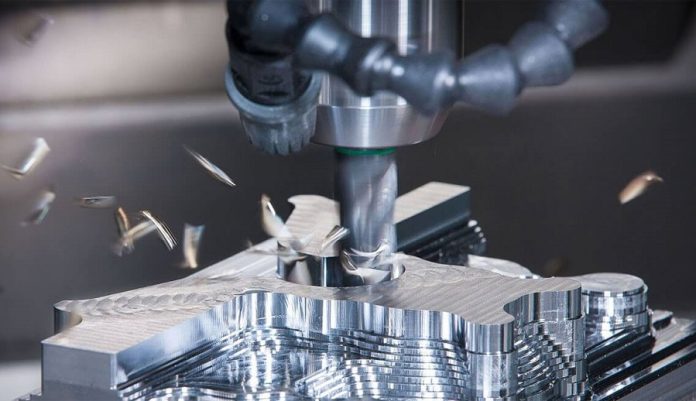The success of CNC machining for aluminum alloy parts lies in the synergy between precision engineering and meticulous CNC programming. Design specifications are translated into computerized instructions that guide the CNC machines in shaping. The raw material into the desired components. Engineers meticulously craft these instructions to ensure utmost accuracy and repeatability in production.
Precision Engineering and CNC Programming
Selecting the appropriate cutting tools and materials is critical in CNC machining of aluminum alloys. Carbide or high-speed steel (HSS) tools, designed to withstand high temperatures and maintain sharpness, are commonly used. Aluminum alloys, known for their machinability. Require tailored cutting speeds, feeds, and tool geometries to achieve optimal results without compromising the integrity of the material.
Precision Control and Machining Techniques
CNC machining employs various techniques to precisely shape Aluminum alloy parts CNC machining services:
- Milling: Utilizing rotating cutting tools to remove material from the workpiece. Milling is a versatile technique capable of creating a wide array of shapes and features.
- Turning: Employing a lathe to rotate the workpiece against a cutting tool. Turning is ideal for cylindrical components like shafts and rods.
- Drilling and Tapping: CNC machines can perform accurate drilling and tapping operations to create holes and threads in aluminum alloy parts.
Optimization for Efficiency and Quality
Continuous advancements in CNC technology focus on enhancing efficiency and quality. Modern CNC machines often feature automated tool changers, adaptive control systems, and real-time monitoring. Optimizing processes for higher productivity and ensuring consistent quality throughout production runs.
Emerging Trends in CNC Machining for Aluminum Alloy Parts
1. Additive Manufacturing Integration
The integration of additive manufacturing techniques with CNC machining is an emerging trend. This hybrid approach allows for the creation of intricate geometries and lightweight structures that were previously challenging to achieve. Solely through traditional machining methods. Additive manufacturing supplements CNC machining by fabricating complex features layer by layer. Providing new avenues for design innovation in aluminum alloy parts.
2. Multi-axis Machining for Complex Shapes
Advancements in CNC machining technology have introduced multi-axis capabilities, enabling the production of highly intricate and complex aluminum alloy parts. Five-axis and even simultaneous multi-axis machining allow for the creation of parts. With intricate contours and varying angles, enhancing design possibilities and component functionality.
3. Digital Twin Technology
The adoption of digital twin technology in CNC machining offers a virtual replica of the physical manufacturing process. By simulating the machining process digitally, manufacturers can optimize tool paths. Predict potential errors, and refine machining strategies before actual production. This technology minimizes waste, reduces lead times, and enhances overall efficiency in producing aluminum alloy parts.
4. Smart Manufacturing and IoT Integration
The incorporation of Internet of Things (IoT) devices and sensors in CNC machines enables real-time monitoring and data collection. This data-driven approach allows for predictive maintenance, performance optimization, and quality control. Smart manufacturing practices improve process efficiency, ensuring consistency and reliability in manufacturing aluminum alloy parts.
5. Sustainability and Material Optimization
Manufacturers are increasingly focusing on sustainable practices in CNC machining for aluminum alloy parts. Efforts are being made to optimize material usage, reduce waste, and implement environmentally friendly machining processes. This includes recycling of materials and adopting energy-efficient machining methods to minimize the environmental footprint of manufacturing operations.
Future Trends and Innovations
The future of CNC machining for aluminum alloy parts is marked by ongoing innovations. Integration of artificial intelligence (AI) and machine learning algorithms aims to further enhance machining precision, predictive maintenance. Adaptive machining strategies, thereby pushing the boundaries of efficiency and quality.
Conclusion
CNC machining stands as a cornerstone in the manufacturing of aluminum alloy parts. Enabling the creation of intricate components with unparalleled precision and efficiency. As technology continues to evolve, the fusion of precision engineering and cutting-edge CNC techniques will further revolutionize the production of aluminum alloy parts. Catering to the ever-growing demands across industries.
The evolution of CNC machining for aluminum alloy parts continues to revolutionize manufacturing processes across industries. As technology advances and new methodologies emerge, the precision, efficiency, and adaptability. CNC machining will further propel innovation in the production of aluminum alloy components, catering to the evolving demands of various sectors.








